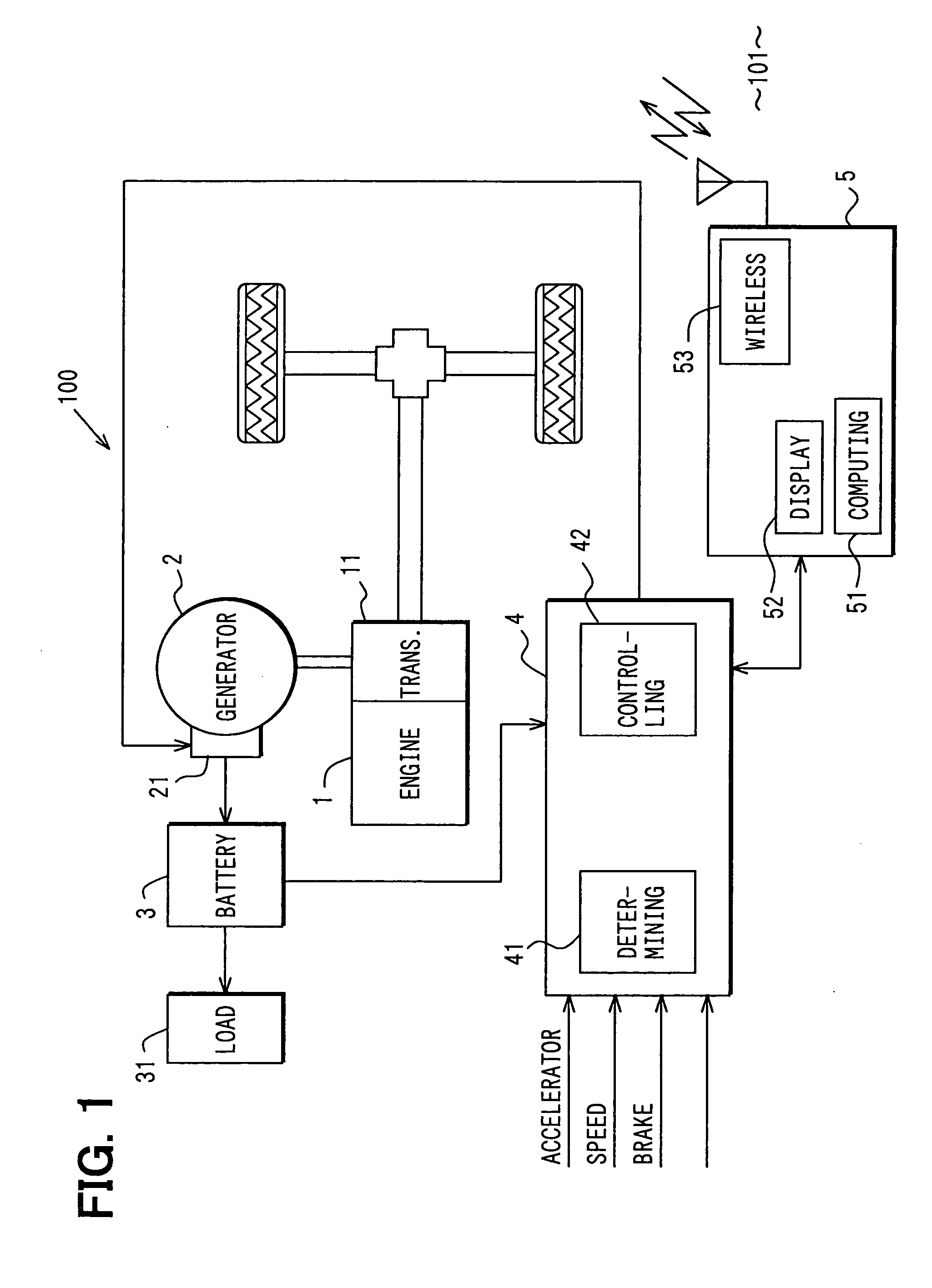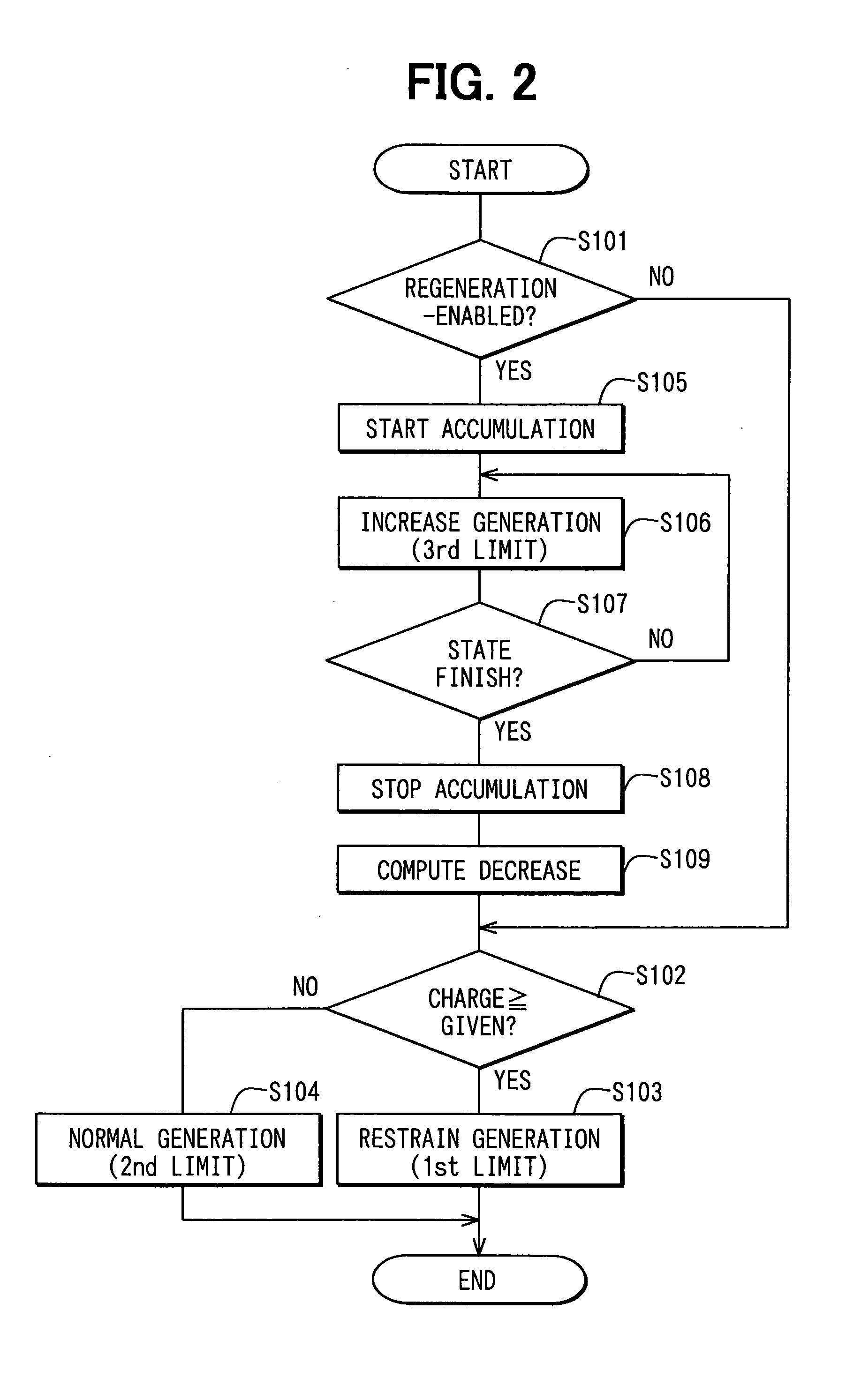Environment conservation contribution system
- Summary
- Abstract
- Description
- Claims
- Application Information
AI Technical Summary
Benefits of technology
Problems solved by technology
Method used
Image
Examples
first embodiment
[0033] (First Embodiment)
[0034] An environment conservation contribution system 100 according to a first embodiment of the present invention will be now explained with reference to FIGS. 1 to 3. The system 100 is constructed of a vehicle 101 constituting a power generation and power consumption systems, and a base station that is constructed to be communicated with the vehicle 101 and deals with data having an economic value under certain security.
[0035] The vehicle 101 includes an in-vehicle engine 1; an in-vehicle generator 2; an in-vehicle battery 3 as an electric power storage accumulating or storing electric power; a controller 4 having a regenerative generation determining means 41 for determining whether regenerative (power) generation is allowed and a generation controlling means 42 for controlling a generation amount of a generator 2; a decreased amount computing means 51; a displaying means 52; and an electronic toll collection system (ETC) in-vehicle device 5 having a wi...
second embodiment
[0070] (Second Embodiment)
[0071] An environment conservation contribution system 200 according to a second embodiment of the present invention will be now explained with reference to FIGS. 4 to 6. The system 200 is different from the system 100 in the following.
[0072] A computing means 43 is built in a controller 4, while a displaying means 40 is disposed properly in an instrument panel. In a regeneration-enabled state, a controlling means 42 increases a generation amount so that generation voltage is increased; in a regeneration-disabled state, the controlling means 42 controls the generation amount by returning the generation voltage to a normal level.
[0073] Decreased amount data computed at Step S207, relative to a (accumulated) decreased amount of fuel consumption or exhaust emission is directly written to a data card 60 storing an ID of a vehicle owner 10, by an in-vehicle writer 50 as needed. The data card 60 is disposed in the in-vehicle writer 50 so that consistency with t...
third embodiment
[0083] (Third Embodiment)
[0084] An environment conservation contribution system 300 according to a third embodiment of the present invention will be now explained with reference to FIG. 7. In the system 300, a parallel hybrid vehicle 301 includes an engine 1; a motor generator 22; an in-vehicle battery 3 as an electric power storage storing electric power; an inverter 32; a controller 4 having a state monitoring means 44; a generator controlling means 45 for controlling the motor generator 22, and a decreased amount computing means 43; a displaying means 40; a wireless terminal 53 as a data providing means. Decreased amount data is provided to the managing center 6 via wireless communications. In this embodiment, the decreased amount data is an accumulated amount relative to a decreased amount of fuel consumption or exhaust emission.
[0085] The engine 1 is operated using gasoline mounted in the parallel hybrid vehicle 301, primarily producing motive energy for traveling. The motor g...
PUM
 Login to View More
Login to View More Abstract
Description
Claims
Application Information
 Login to View More
Login to View More - R&D
- Intellectual Property
- Life Sciences
- Materials
- Tech Scout
- Unparalleled Data Quality
- Higher Quality Content
- 60% Fewer Hallucinations
Browse by: Latest US Patents, China's latest patents, Technical Efficacy Thesaurus, Application Domain, Technology Topic, Popular Technical Reports.
© 2025 PatSnap. All rights reserved.Legal|Privacy policy|Modern Slavery Act Transparency Statement|Sitemap|About US| Contact US: help@patsnap.com



